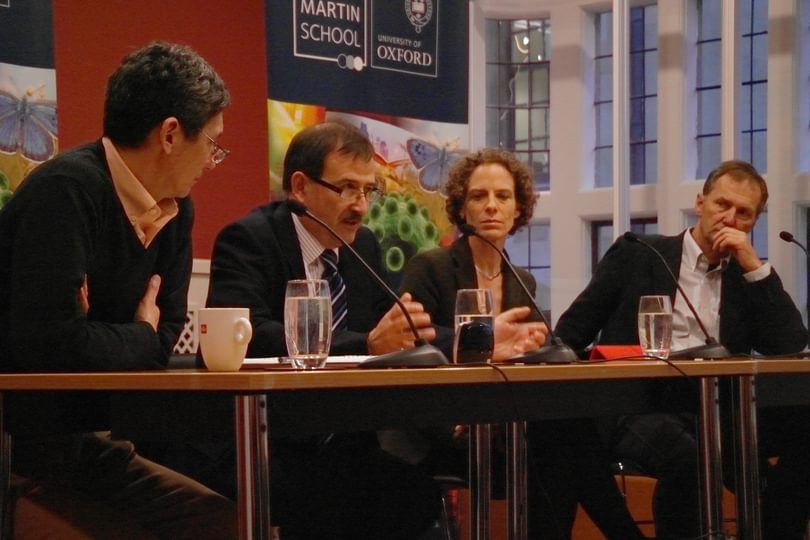
The tension between the need for new vaccines and the cost of developing and distributing them was explored in the final ‘Health in the 21st Century’ seminar at the Oxford Martin School on Thursday, December 4.
Professors Susan Lea and Christoph Tang of the Oxford Martin Programme on Vaccines were joined by Dr Ian Feavers, Head of the Division of Bacteriology, National Institute for Biological Standards and Control (NIBSC) and Professor Jeffrey Almond, Former Vice President and Head of Discovery Research and External R&D at Sanofi Pasteur, the world’s biggest producer of vaccines.
The panel began with a discussion of the meningitis B vaccine, which Dr Feavers said exemplified the “tipping point” that had been reached on cost-effectiveness. “Meningitis B is a terrible disease and it would be best prevented by a vaccine,” he said, “but the number of cases in the UK has dropped to 600 a year from 1,500 a decade ago. A vaccination programme would cost about £100-200 million a year, so about £10 million per death avoided. So what should one do in this era when we’re getting to a point where vaccines are marginally cost effective?”
Professor Almond said the cost of developing a new vaccine today was around a billion dollars, and said governments had to be reasonable in allowing drug companies to charge a price that meant they could make a profit, invest in research and development, and sustain themselves.
Looking to future vaccines, Professor Tang said the toolbox for making new vaccines had never been fuller. “We have whole genome sequences of all the major pathogens, we have a blueprint for every single meningococcus that causes disease in the UK, we have huge numbers of sequences of HIV, flu and Ebola,” he said. “We have all the resources at hand and we can apply them now. The big hole we have is understanding immune responses and protective efficacy. We have huge opportunities to use what’s available out there in terms of resources and tools and we have big questions to answer for many infectious diseases about how protection is mediated.”